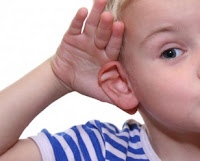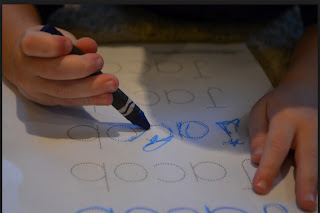This blog reflects the contents see in the course (Subject: Foreign Language for Infant Education, English) and its application in the syllabus design..
The contents of the course are going to reflect from the answer to the various questions that may arise to future teacher of English when faced with the teaching of the English language.
QUESTIONS TO ANSWER
How the learning of English is considered at present in Spain?
The learning of English as Foreign Language has evolved from being a subject in the school curriculum to be considered a real communication too.
What is the main reason why learn a foreign language and therefore the aim of the teaching of the English language?
The aim of teaching English is to learn to communicate in English and communicate is to master four skills: reading, writing, speaking and listening
What should be able to get an English teacher with his younger learners?
The English teacher should be able to promote a first approach to English language.
What aspects of ability of communication in foreign language education english teacher should focus?
Young children teacher should focus on oral skills of listening, understanding and speaking. At 3-5 years old students cannot write properly in Spanish and will be difficult to read and write in English.
What have to take into account a languages teacher when dealing with a young student?
The age of students and what they can learn at that age.
Younger children (up to 8 years) seem to pay more attention to sound and prosody and have greater ability to perceive sounds than to reproduce, also tend to simplify the sounds that do not exist in their own language. The teacher must translate knowledge of this fact in the way that communicates with the children in English. The teacher should use a slow speech, with pauses and intonation curves, focused on the most important elements of communication that allow assimilation of contents. (Murado 2010)
B.Rodríguez López and M. Varela Méndez, 2004 citado en Murado, 2010
Children 3-4 years old
They can understand almost everything in their mother tongue, and are able to figure out the meaning of words and expressions in second or foreign laguage.
Children 4-5 years old " They understand everything. They can still have some pronunciation problems, but are able to correct them. They are curious about new words, and they learn very fast from their parents or teachers, media, etc.
Language is an essential tool for children to develop cognitively. As language develops the mental notion can be represented using words
The expression of words helps the child to interact with others and to transform their environment.
How young children learn?
Children like to be active, to think, to discover things, because they are constructing their knowledge working in their environment.
Children are continually interacting with the world around her/him, solving problems that are presented by environment.
Young children learn and develop through their activity in interaction with their immediate environment.
How should the teacher approximate English language to young children?
English teaching should not occur as a set of isolated words, but within a context in which children can use them.
English teaching should approximate English language since different approaches through the use of the different types of intelligences by Howard Garner: musical-rhythmic and harmonic, visual-spatial, verbal-linguistic, logical-mathematical, bodily-kinesthetic, interpersonal, intrapersonal, naturalistic, existential.
What is the role of the teacher in the learning of the English language?
The teacher acts as a mediator in the process of learning. Teacher try to mediate what next it is the child can learn and that's why he plan lesson and sequence content.
Are there any methods for teaching English of young learners?
These are some. These are:
Grammar-translation method- it consist of learning grammar rules and translating literary texts with help of a dictionary.
Natural method- it consist of learning words together with the objects they were referred. This method advocates that the process of second language learning must be similar to learning of the mother tongue. This process provides children visual and kinaesthetic so that they understand the language, but you are not asked to reproduce the language. Children spend a period of time in which do not speak but are capable of understanding what is said to them in their mother tongue. Defends that is must be the way to teach a foreign language. (Tejada, G., Pérez, M.L., Luque, G., Faculty of Humanities and Education, University of Jaén)
Audiolingual-method- it consist of repeating words and sentences. It emphasizes the importance of the oral language in areas such as pronunciation and intonation from the traditional form of primarily teach grammar for written texts. (Tejada, G., Pérez, M.L., Luque, G., Faculty of Humanities and Education, University of Jaén)
Total Physical Response- it is based on the fact that we memorize something better when it is related to movement. The association between movement and language facilities spontaneous acquisition because of the association between stimulus and response (Tejada, G., Pérez, M.L., Luque, G., Faculty of Humanities and Education, University of Jaén)
Task-based learning- The lesson is focuses on a task. Students work on task, and they report about it to the rest of the group. Tasks are those activities for which the language is used in everyday life.
Lexical approach- It highlight the role of vocabulary (learning words, phrases...) in learning English. When students learning vocabulary also have to learn how the words are used, and, consequently, grammar is taught.
Communicative-It is based on making students communicate in the foreign language.
What resources can I use for the teaching of English?
. Had-made materials
. Manufactures materials
. Visual aids: realia and flashcards
. Songs
. Puppets
. Tales and stories
. Cartoon
SYLLABUS DESIGN FOR YOUNGER CHILDREN (3-4 years old)
A syllabus contains what is to be taught with a clear reference to selection of grading of content. A syllabus provides information about what should be studied and how that particular content should be select and sequenced.
TOPIC
ANIMALS
 http://www.androidpit.es/es/android/market/aplicaciones/aplicacion/com.tet.animalssounds/Sonidos-de-Animales-para-ninos
http://www.androidpit.es/es/android/market/aplicaciones/aplicacion/com.tet.animalssounds/Sonidos-de-Animales-para-ninosTeaching of English language of younger children aims to achieve a first approximation to the English who take the kids of the goal of communicating in the English language. To achieve this first approximation to English language we use a topic of interest for children, animals.The reason is that the theme of animals is part of most young learner syllabi, as well as be object of curiosity and interest children. Animals like children, they found animals fun, feel curiosity and attraction for them, so we'll use this focus or centre of interest as an element of approximation and motivation for learning English.
Our main objective is to develop children abilities of listening, understanding and expressing in simple words so that they can interact with other people. We want children to be able to name the animals and use the expression "....goes...." to refer to the sounds the animals make.
GRADING CONTENT
The steps to follow in order to achieve the objective of the syllabus is based on the Natural Method and consists: first to expose the children to language sounds, and then to encourage the understanding and assimilation of the sounds by repeating, so that they to be able to repeating the words, and to emit words and formulate simple grammatical expression by themselves, in appropriate situations and contexts.
METHODOLOGY
Audiolingual method,Total Physical Response, Communicate Language Teaching, The Natural Approach and Task-based method.
AIMS
. To familiarize with language sounds.
. To learn vocabulary about animals
. To develop oral skills of understanding, listening and oral speech.
FUNCTIONS
. Names of animals.
. To practice the following structure: "(animal name+goes+ animal sound", for example,
" The dog goes woof, woof".
CONTEXT
Children learn and develop through their activity interacting with their environment. So that, we are going to provide the children activities and an environment to promote the learning about animals in the classroom.
In the approach to the vocabulary of the animals in English contexts that we use are:
. Classroom decoration with animal drawings, picture, toys, puppets,...
. Visuals ( flashcards )
http://esl-kids.com/flashcards/animals.html


. Songs ("Animal Sounds Song")
http://www.youtube.com/watch?v=h6kssBH6rPo
http://www.youtube.com/watch?v=V7R_M52EAkI
. Drawing and coloring activities
http://www.coloring.ws/animals.html
http://www.activityvillage.co.uk/animal-colouring-pages
.
. Realia (visit to zoo or a farm)
http://www.zoomadrid.com/educacion/educacion-infantil
SKILLS
Listening
The goal is to familiarize the children with the sounds of the English language and are able to follow a slow dialogue clearly articulated.
Activities
Using song and flashcards:
1. Play the song "The animal sounds song" and ask children to listen. Play the song again and again...and ask children to listen.
2. Hold up an animal flashcards and say "it's a (animal name) and say " The (animal name) goes (animal sound). For example "it's a duck", "the duck goes quack, quack". Do the same with others flashcards.
3. Play the song again, holds up an animal flashcard, And ask the children to stan up each time they hear the animals drawn on the flashcard. Do the same with others flashcards. (TPR)
Speaking
Sing a song
Say the names of animals in English
Practice the structure " The (animal name) goes (animal sound)"
Activities
Using song and flashcards
1. Play the song "The Animal Sounds Song" and encourage children to sing the song while they mimic the movements of the animals. (TPR)
3. Hold up an animal flashcard and say for example "it's a dog" and "the dog goes woof, woof". Ask children repeat after you. Do the same with other flashcards.
4. Play the sound of one animal and ask the students to guess and say the name of the animal.
Play the sound:
The student says "it's a pig"
Writing
Write words with the dotted outline
Activity
Use drawings of animal colorings with the name of the animals on dots so the children have to link the dots to reveal what the name of the animal is. Collect the drawings and make a poster to display in the classroom.
Reading
Recognizing simple words
Activity
Tell the children to associate the picture of an animal with its name. You can use cards with drawings of animals and card with names of animals. The children will have to find matching pairs.
TASK
Task are those activities for which the language is used in everyday life
Activity
Visit a zoo or a farm. Tell the children to make a picture dictionary with the drawings of animals they have seen in the tour. Tell the children to show the picture dictionary each other in classroom. They will have to name the animals and say that sound the animals make.
(Task-based learning method).
TO MAKE THIS BLOG HAS BEEN OBTAINED INFORMATION FROM THE FOLLOWING SOURCES:
. G., Tejada, G., Pérez, M.L, Luque, G., Chapter 4. Current approaches and teaching methods. Bilingual programmes. (Faculty of Humanities and Education, University of Jaén). Recuperaod el 13 de octubre de 2013, de: http://www4.ujaen.es/~gluque/Chapter4HANDBOOKDEFINITIVO.pdf
. Murado, J.L (2010). Didáctica para educación infantil. Métodos para la enseñanza y el aprendizaje de la lengua inglesa. Vigo. Ideas propias
. http://www.teachingenglish.org.uk/teaching-kids/using-songs
. The contents of course Foreign Language for Infant Education (English) Prof. Dr. Soraya García. Centro Universitario Cardenal Cisneros.
























































No hay comentarios:
Publicar un comentario